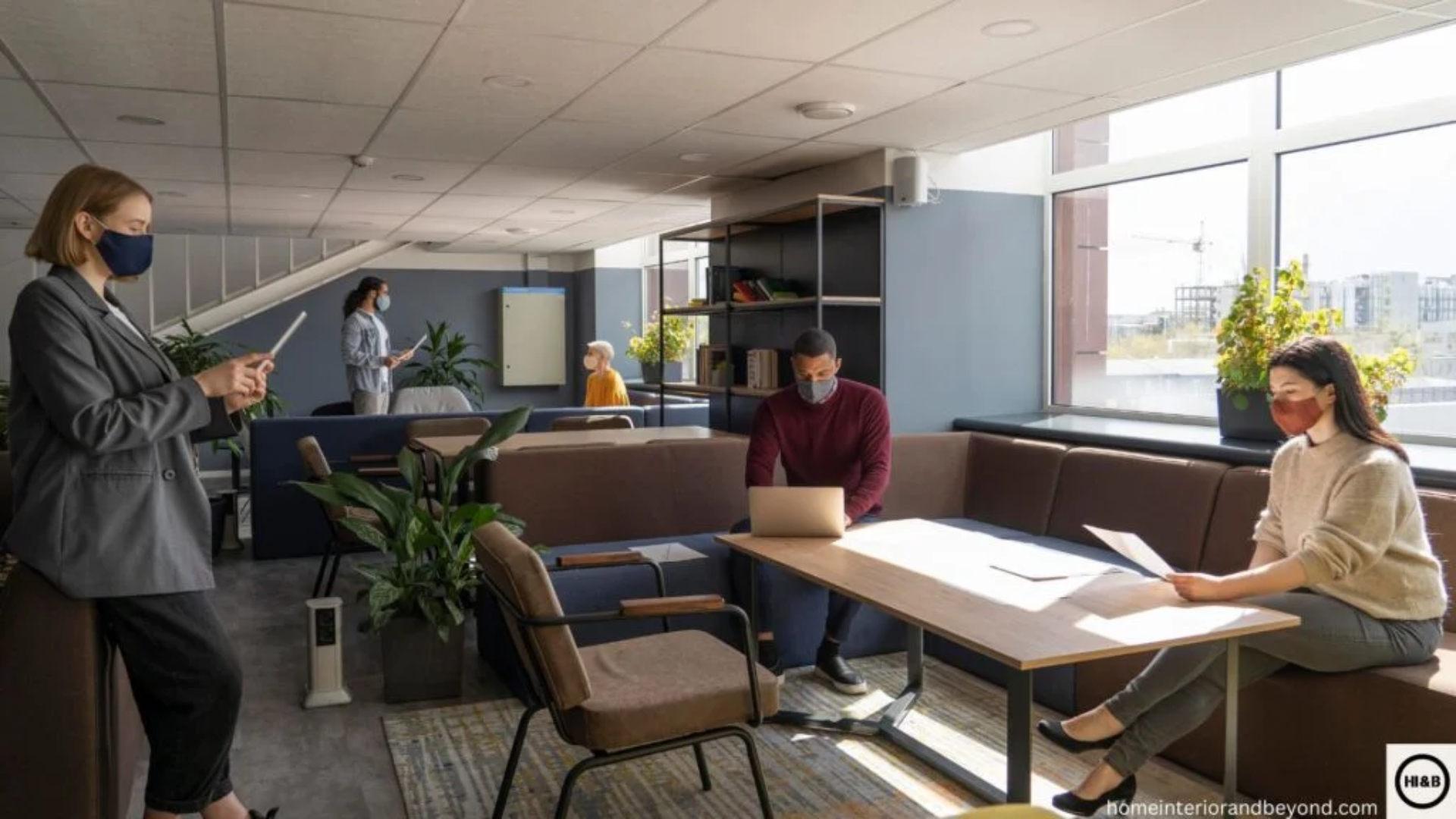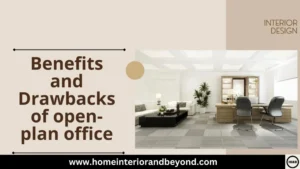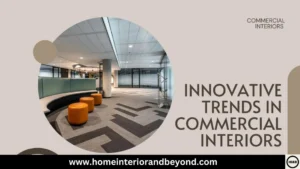In today’s fast-paced business environment, Collaborative Workspaces. It is one of the main stimulating factors to innovation and success. Modern offices are no longer about desks and cubicles but about teamwork and creativity. Well-designed interior design plays a great role in developing spaces that encourage interaction and collaboration. Now, let’s take a look at some of the most popular design strategies for fostering teamwork.
1. Open Floor Plans
An open floor plan is quite simple. There is less to no physical barrier between the office spaces such as walls and partitions, making it more accessible for free-flowing communication among the members. They can talk things out in a discussion anytime while having impromptu meetings. Easy exchange of ideas
2. Flexible Furniture Arrangement
For different types of collaboration, furniture must be flexible and adaptive. Modular seating, movable tables, and workstations can be reconfigured by a team to make space changes feasible based on requirements. Adaptable furniture makes every brainstorming session or hasty meeting more fluid with the support of collaboration.
3. Dedicated Collaboration Zones
While open spaces are great for communication, specific zones of collaboration are equally important. These may be large tables for conferences, cozy break-out rooms, and lounge spaces in which teams come together to think and discuss. Design these spaces comfortably and with plenty of whiteboards or digital screens.

4. Technology
Technology has become an integral part of teamwork in the modern age. Technology-friendly rooms with an interactive screen, video conferencing setup, and adequate charging points for every device enable teams to work together either physically or virtually. Making sure your interior design features technology integration is core to being able to work smoothly.
5. Incorporation of Natural Elements
Biophilic design that takes on aspects like natural light, greenery, and natural materials is seen to improve the workspace and creativity. The employees in an environment are likely to be more relaxed and productive and therefore result in better collaboration. Green walls or big windows are wonderful for creating a welcoming and collaborative environment.
6. Acoustics and Privacy
Though collaboration is a necessity, there are times when teams need to be focused or have a private meeting. So, an excellent office space should have an equilibrium of open spaces and private areas or soundproof rooms so that people can focus without any diversion. Acoustic panels, carpets, and plants have reduced the noise level so much that the whole office environment has become harmonious.
FAQ
How do I design an office for collaboration?
Excellent methods of designing an office to foster teamwork are an open space, flexible furniture, and dedicated collaboration zones. This encourages communication and allows for effective team interaction.
What are some examples of flexible furniture for collaborative workspaces?
Modular sofas, moving desks, and mobile whiteboards are a few examples of flexible furniture that allows teams to customize their workspace according to the needs of collaboration.
Why are breakrooms a critical component of collaborative workspaces?
Breakrooms will afford an informal setting in which teams can have informal meetings or brainstorming will take place. Such space is useful in inspiring creativity, as the different backdrop to the teams might instill creative thinking.
How can technology be used to support collaborative workspaces?
The use of technology by interactive screens, video conferencing setup, and charging points is crucial to facilitate communication both within people and with remote teams.
What is the role of biophilic design in collaboration?
The presence of natural light and greenery in interior spaces will make it a welcoming and more imaginative place for the employees, thus enhancing employee well-being and cooperation in the workplace.




